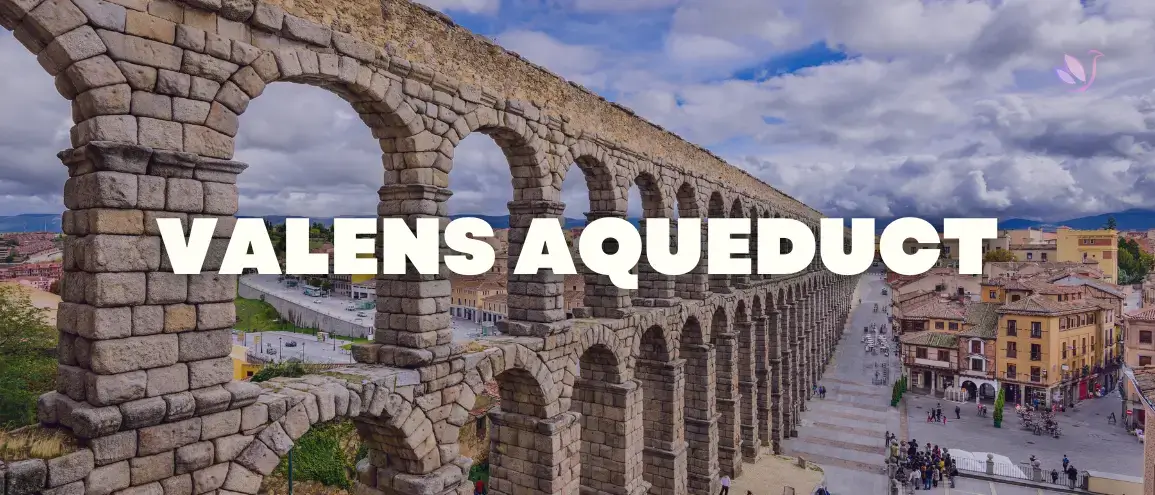Valens Aqueduct

Valens Aqueduct: A Monument to Ancient Roman Engineering
The Valens Aqueduct, one of the most important historical structures in Istanbul, stands as a remarkable testament to the ingenuity of Roman engineering. Built in the 4th century AD, this aqueduct once supplied water to the ancient city of Constantinople (modern-day Istanbul). Today, it serves as a lasting symbol of the city’s rich historical heritage and architectural brilliance.
Why Visit the Valens Aqueduct?
- Roman Engineering Marvel – Built by the Roman Emperor Valens, the aqueduct spans over 920 meters and stands at a height of 26 meters in some places.
- Iconic Landmark – The aqueduct’s impressive arches and well-preserved structure make it a unique and easy-to-spot feature in Istanbul’s landscape.
- Cultural Heritage – The aqueduct played a critical role in the city’s infrastructure for over 1,000 years, providing water to the people of Constantinople.
- Great Photo Opportunities – The arches of the aqueduct create a stunning backdrop for photographs, especially with the sunset or sunrise lighting up the scene.
Highlights of the Valens Aqueduct
1. Architectural Grandeur
The Valens Aqueduct stretches across the historic Fatih district and features rows of imposing arches, showcasing the Roman Empire’s engineering prowess. The aqueduct is one of the few examples of ancient infrastructure still standing today in Istanbul.
2. Water Supply System
Originally, the aqueduct was part of a much larger water supply system that transported fresh water from the hills of the north to the city center. Its unique design and advanced technology allowed water to flow efficiently, even in times of drought.
3. Historical Significance
As a part of the Byzantine era, the Valens Aqueduct represents the Roman influence on the city, particularly its efforts to create a sustainable and organized urban environment. It was used by Emperor Justinian to supply water to the Hagia Sophia and other important landmarks.
4. The Bridge
One of the most notable parts of the aqueduct is its bridge that stretches over a busy road, adding an element of visual drama and connecting modern-day Istanbul to the city’s ancient past.
Best Time to Visit
- Early Morning or Late Afternoon – To avoid the crowds and capture the best photos of the aqueduct with golden hour light.
- Weekdays – Visiting during weekdays ensures you’ll have a more peaceful experience, as it can be busier on weekends.
How to Get to the Valens Aqueduct
- By Tram – Take the T1 tram to Aksaray Station, and from there, it’s a short walk to the aqueduct.
- By Metro – You can reach Valens Aqueduct by taking the M2 metro line and getting off at Vezneciler Station, which is very close to the site.
- By Bus – Various buses pass through the Aksaray district, where the aqueduct is located, so it’s easy to reach by public transport.
Tips for Visiting
- Combine Your Visit – The aqueduct is located near other historical sites such as The Column of Constantine, Laleli Mosque, and The Grand Bazaar, making it ideal for a half-day walking tour.
- Bring Comfortable Shoes – The area around the aqueduct involves a bit of walking, so be sure to wear comfortable shoes for exploring.
- Take Photos – The aqueduct makes for a fantastic photography subject, particularly when lit up at night or during sunset.
Conclusion
The Valens Aqueduct is an awe-inspiring piece of Roman engineering that not only offers insight into ancient infrastructure but also connects Istanbul's rich history with the present. As one of the most iconic structures in the city, it offers visitors a chance to marvel at the artistry and practicality of Roman design.
To fully explore Istanbul’s historical and architectural gems, consider taking an Istanbul daily tour to uncover more of the city’s ancient wonders and hidden treasures!